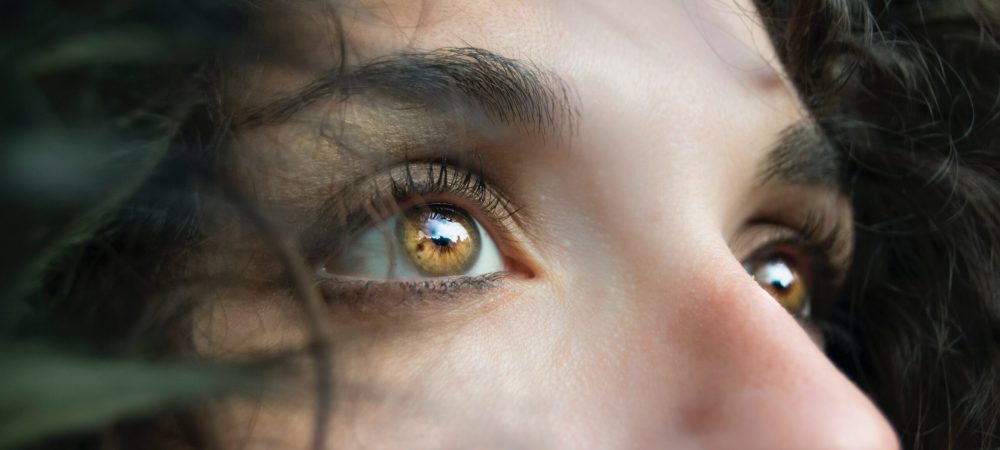Home » Ultimate Guide to CXL: Corneal Cross-Linking
Ultimate Guide to CXL: Corneal Cross-Linking
Corneal Collagen cross linking is an FDA approved procedure in the US that strengthens the collagen fibers in the corneal tissue in order to decrease the progression of keratoconus or corneal ectasia.
The combination of the riboflavin and ultraviolet light results in strengthening of the bonds between the middle layers of the cornea.
This usually stabilizes the cornea and prevents or at least reduces further changes in the shape of the cornea. This procedure is often done on both eyes at the same time. The recovery time is about three to five days. Visual recovery takes about four weeks.
Other benefits may include an improvement in uncorrected visual acuity and a decrease in astigmatism. This may result in a change of prescription for contact lenses/glasses and an improvement in uncorrected visual acuity.

How much does cross linking cost?
Cross linking unfortunately is not covered by insurance and the cost is $1500/ eye. There are payment plans available for those who need them.
Is it covered by insurance?
While collagen cross linking is a necessary procedure in the US, it is unfortunately not covered by insurance. All of the visits pre and post are covered by insurance.
How does cross linking work?
Cross linking works by using eye drops (riboflavin) and UV light to treat the corneal epithelium to pause the change in corneal shape. The entire procedure lasts 30 minutes and helps with treatment of progressive keratoconus. Patients with keratoconus note that this minimally invasive FDA approved procedure helps improve uncorrected visual acuity by improving the corneal shape. It also helps prevent corneal transplants in the future by making the corneal tissue stronger and healthier. Corneal collagen cross linking works by strengthening the collagen fibers and decreasing or stopping the rat e of corneal ectasia progression.
What is the recovery?
The healing time varies. The front layer of the cornea in the treated eye is disturbed or completely removed, allowing the penetration of the riboflavin drop. Before the CXL procedure, the patient is given some antibiotic drops to use in the treated eye for several days.
Contact lenses should not be worn prior to the cross linking procedure or the day of the CXL procedure in either eye. 30 minutes prior the procedure, topical anesthesia eye drops will be placed in the treated eye, prior to the procedure on the surface of the cornea.
After the CXL procedure in both epi on and epi off cross linking, a bandage contact lens is placed on the surface of the eye, sometimes along with a special amniotic membrane. This bandage contact lens is removed in the office at about 5-7 days after the procedure from the treated eye.
The goal of the bandage contact lens is to promote healing of the epithelium, the surface of the cornea, and to reduce pain and decrease sensitivity to light. During the 5-7 days after the cross linking procedure, if there is some discomfort, artificial tears can be used continuously to reduce pain and sensitivity to light. It is recommended not to rub your eyes, as this will not reduce pain or decrease sensitivity to light.
You should expect to have blurred vision worse than baseline in the treated eye, as well as feeling light sensitive. The blurred vision and light sensitivity will decrease gradually over the weeks after the procedure.
What is the patient's experience?
Prior to the CXL procedure, patients are instructed to use antibiotic eye drops in the treated eye. During the procedure, topical anesthesia in the form of eye drops is given 30 minutes prior to the cross linking procedure. Next, the surface epithelial layer is removed or roughened up. The eye is bathed with liquid riboflavin (vitamin B2) as eye drops for 30 minutes and then exposed to a controlled amount of a specific wavelength of ultraviolet light for 10 to 30 minutes. This UV light strengthens the collagen fibers. A bandage contact lens is placed onto the surface of the eye at the end of the procedure and kept on for several days to expedite healing of the surface layer of the cornea and for comfort.
What is the success rate?
The success rate of the pausing the progression of keratoconus is close to 98%. There are certain cases in which the keratoconus progresses; however, the progression without the collagen cross linking would have been worse without it than with it. This 30 minute minimally invasive procedure is highly effective at the treatment of progressive keratoconus.
Are there any complications or side effects?
Since this is not a surgery inside they eye, there are no risks of intraocular infections/ retinal detachment/ glaucoma inside the eye. Since this is just a topical procedure on the surface of the eye
Is corneal cross-linking FDA approved?
Corneal cross linking has been approved in the United States since 2016 for the treatment of progressive keratoconus. Prior to that, it was performed in Europe and Canada since 2008. This minimally invasive 30 minute procedure treats the corneal tissue and strengthens the collagen fibers with UV light, thus decreasing the chance of worsening corneal ectasia and of needing a corneal transplant in the future.





